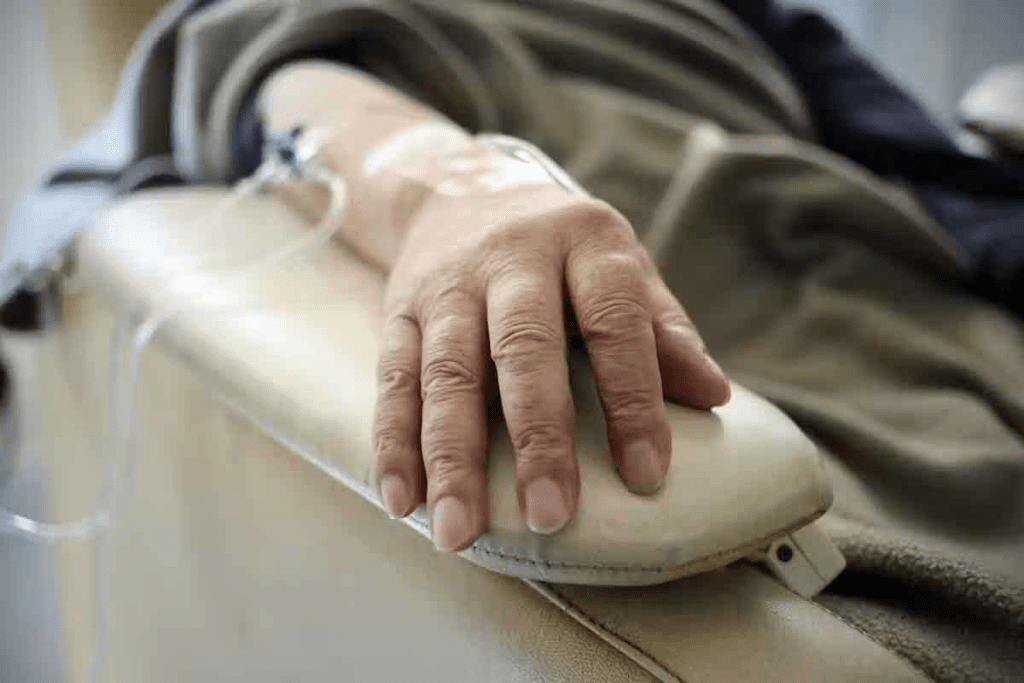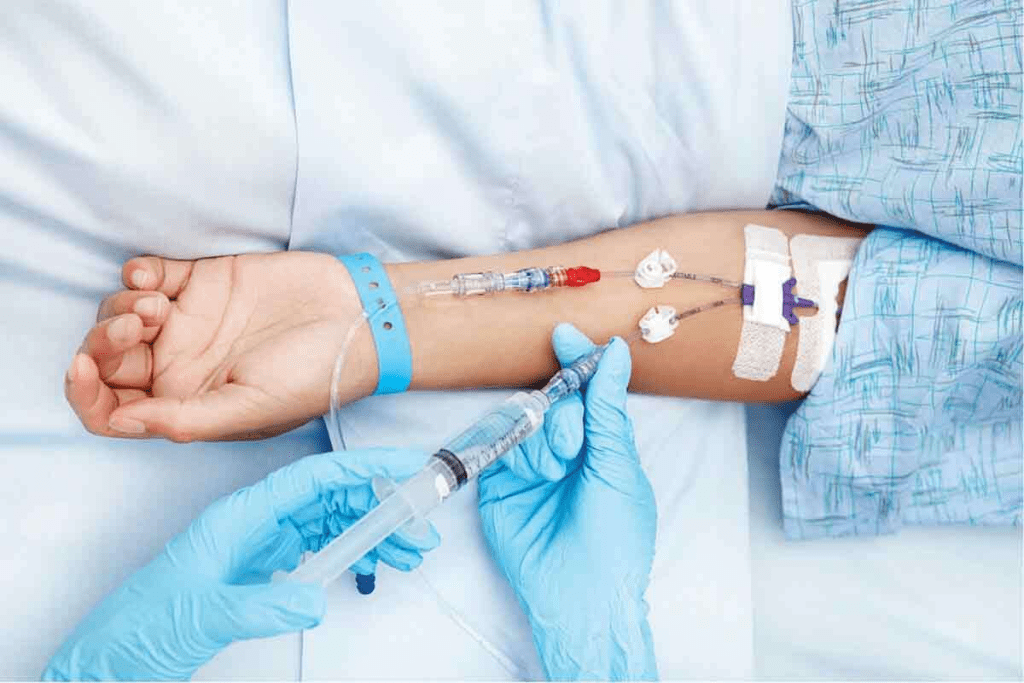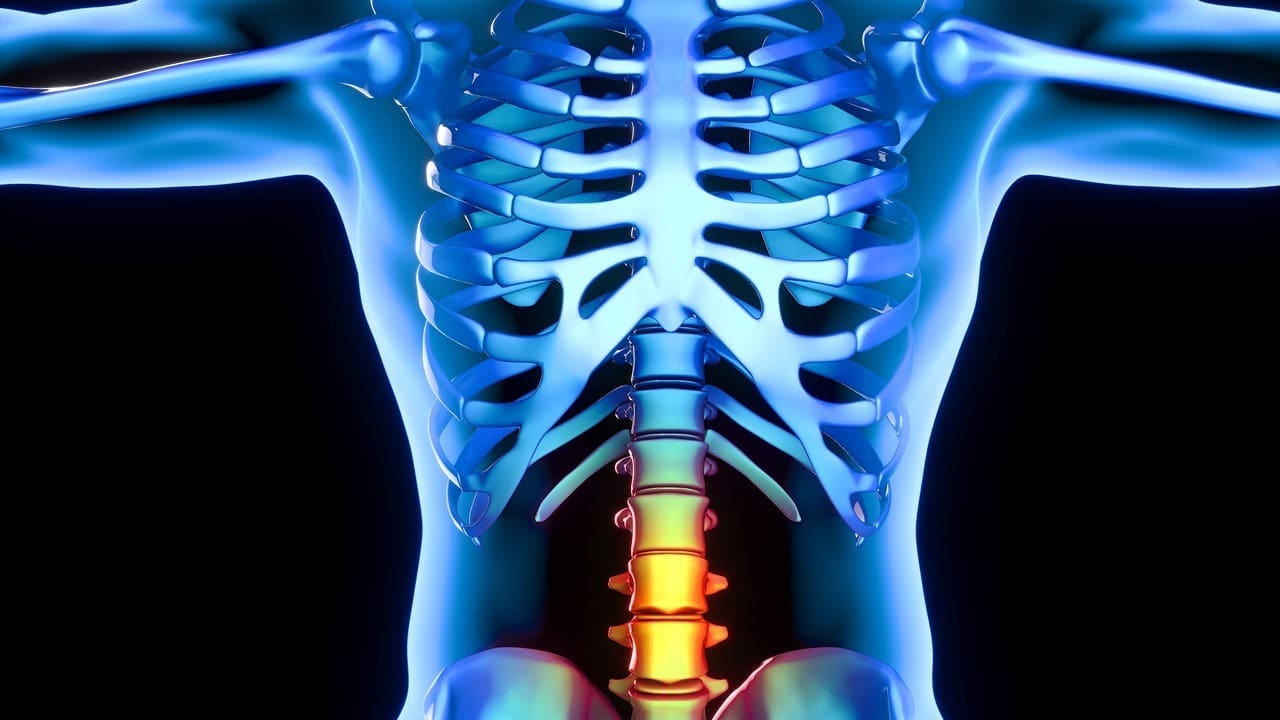Last Updated on November 27, 2025 by Bilal Hasdemir

At Liv Hospital, we aim to offer top-notch healthcare. We support and guide international patients. Chemotherapy uses medicines to kill cancer cells. Oral chemotherapeutic agents, or chemo pills, have many ingredients to target cancer cells.
There are many types of chemotherapy, each working differently. Knowing what’s in chemo pills is key for patients. We’ll look at the ingredients in chemo pills and how they fight cancer. This helps patients understand their treatment better. What is in chemo pills: key chemotherapeutic ingredients and how they work.
Key Takeaways
- Chemotherapy uses medicines to destroy cancer cells.
- Oral chemotherapeutic agents contain a wide range of ingredients to target cancer cells.
- Different types of chemotherapy work in various ways.
- Understanding chemo pill composition is key for patients.
- Liv Hospital provides top international patient support and guidance.
The Science Behind Oral Chemotherapy

It’s important to know how oral chemotherapy works to fight cancer. Oral chemotherapy, also known as kemo therapy or chimiotherapy, uses pills or capsules to treat cancer.
We’ll look at what oral chemotherapeutic agents are and how they’ve evolved. This will help us understand their role in cancer treatment.
Defining Oral Chemotherapeutic Agents
Oral chemotherapeutic agents are pills taken to fight cancer. They include different types like alkylating agents and plant-based inhibitors. These target cancer cells at various stages.
These agents work by stopping cancer cells from growing. For example, alkylating agents damage DNA in cancer cells, stopping them from making more cells.
Evolution of Pill-Based Cancer Treatment
Oral chemotherapy is a big step forward in cancer treatment. Before, chemotherapy was given through IVs, needing hospital stays or many clinic visits. Now, pills let patients treat themselves at home.
This change makes treatment easier and more comfortable. It also helps patients stick to their treatment plans better. Pills can be taken at times that fit each patient’s life.
| Type of Chemotherapeutic Agent | Mechanism of Action | Examples |
| Alkylating Agents | Damage DNA by adding alkyl groups | Cyclophosphamide, Chlorambucil |
| Antimetabolites | Interfere with DNA synthesis | 5-Fluorouracil, Methotrexate |
| Plant-Derived Mitotic Inhibitors | Inhibit cell division | Vinblastine, Paclitaxel |
Knowing about the different oral chemotherapeutic agents helps doctors plan better treatments. This is based on what each patient needs.
What Is in Chemo Pills: A Detailed Look

Chemo pills are made to fight cancer by targeting and killing cancer cells. They have many ingredients that work together. Knowing what’s in them helps patients and doctors make better choices.
Primary Active Ingredients
The main parts of chemo pills are the chemotherapeutic agents. These agents target cancer cells directly. They include:
- Alkylating agents, the oldest type, bind to DNA, causing cell death.
- Antimetabolites, stop DNA synthesis, slowing cancer cell growth.
- Plant-derived mitotic inhibitors, block cell division by disrupting the mitotic spindle.
These ingredients aim to harm cancer cells more than normal cells.
Carrier Compounds and Delivery Systems
Chemo pills also have carrier compounds and delivery systems. These help the medication work better. They include:
- Excipients, inactive ingredients that stabilize the active ingredients or improve texture.
- Coatings, protect the active ingredients from breaking down or make the pill easier to swallow.
Together, these parts ensure the active ingredients reach the target cells effectively.
Bioavailability Enhancers
Bioavailability enhancers help the body absorb the active ingredients better. Examples are:
- Surfactants, improve solubility of lipophilic drugs.
- P-glycoprotein inhibitors, increase absorption of certain drugs.
These enhancers are key to making sure the medication is absorbed well, boosting its effectiveness.
| Component | Function | Examples |
| Primary Active Ingredients | Target and kill cancer cells | Alkylating agents, Antimetabolites |
| Carrier Compounds | Enhance delivery and stability | Excipients, Coatings |
| Bioavailability Enhancers | Improve absorption | Surfactants, P-glycoprotein inhibitors |
Major Classes of Chemotherapeutic Compounds
It’s important to know about the main types of chemotherapeutic compounds. They are key in fighting cancer. These compounds target fast-growing cells and stop tumors from growing.
Alkylating Agents
Alkylating agents attach an alkyl group to cancer cells’ DNA. This stops them from making copies of themselves and kills them. Cyclophosphamide and chlorambucil are two common ones used in treatment.
Antimetabolites
Antimetabolites look like DNA or RNA parts but don’t work right. They stop DNA making, causing cells to die. Methotrexate and fluorouracil are examples used to fight cancer. They trick cancer cells into thinking they have the wrong building blocks.
Plant-Derived Mitotic Inhibitors
Plant-derived mitotic inhibitors come from plants and stop cells from dividing. Vinblastine and paclitaxel are examples. They mess with the cell’s division process, stopping cancer cells from growing.
Synthetic Molecules
Synthetic molecules are made in labs to target cancer cells. They include drugs like imatinib, which goes after specific cancer growth helpers. These molecules are more precise, often causing fewer side effects.
There are many types of chemotherapeutic compounds. This variety helps doctors tailor treatments better. It makes treatments more effective and less harsh for patients.
Mechanism of Action: How Chemotherapy Targets Cancer Cells
Chemotherapy works by stopping cell division and DNA making, which kills cancer cells. It targets cells that grow fast, a trait of cancer cells.
Interference with Cell Division
Chemotherapy stops the cell cycle, hitting cells when they’re growing and dividing. It can stop cells at different stages, based on the drug used. Some drugs act during the mitotic phase, others during DNA making.
This stops cancer cells from growing and spreading. It’s key in controlling cancer growth and spread.
DNA Synthesis Disruption
Many chemotherapy drugs mess with DNA making. DNA making is when cells create new DNA before dividing. By stopping this, chemotherapy stops cancer cells from making new DNA and dividing.
“Chemotherapy’s ability to disrupt DNA synthesis is a key factor in its effectiveness against rapidly proliferating cancer cells.”- Oncologists highlight.
Selective Toxicity to Malignant Cells
Chemotherapy aims to be selective, targeting and killing cancer cells while sparing normal cells. It’s not perfect and can harm some healthy cells. But it hits cancer cells harder.
| Mechanism | Description | Effect on Cancer Cells |
| Interference with Cell Division | Disrupts the cell cycle, preventing cell division | Prevents proliferation of cancer cells |
| DNA Synthesis Disruption | Inhibits the creation of new DNA strands | Prevents cancer cells from replicating |
| Selective Toxicity | Targets malignant cells more than normal cells | Destroys cancer cells while sparing healthy cells |
Knowing how chemotherapy targets cancer cells is key to understanding its role in cancer treatment. By stopping cell division and DNA making, chemotherapy is a strong tool against cancer.
Common Chemotherapy Regimens and Their Abbreviations
Chemotherapy regimens are detailed plans that mix different drugs. They aim to kill cancer cells while keeping side effects low. It’s key for both patients and doctors to know about these plans.
Combination chemotherapy uses more than one drug at a time. This method helps prevent cancer cells from becoming resistant. Common regimens include CHOP, ABVD, and FOLFIRINOX.
Understanding CHOP Therapy
CHOP stands for Cyclophosphamide, Hydroxydaunorubicin (doxorubicin), Oncovin (vincristine), and Prednisone. It’s often used for non-Hodgkin lymphoma. These drugs work together to attack cancer cells.
“The CHOP regimen has been a cornerstone in the treatment of non-Hodgkin lymphoma for decades, improving survival rates.”Experts in hematology recognize.
ABVD Protocol Explained
ABVD is a common treatment for Hodgkin lymphoma. It includes Adriamycin (doxorubicin), Bleomycin, Vinblastine, and Dacarbazine. This mix is effective and has fewer side effects.
ABVD is widely used because it works well and can be adjusted for each patient.
FOLFIRINOX and Other Combination Therapies
FOLFIRINOX is a strong treatment for pancreatic cancer. It has Folinic acid, Fluorouracil, Irinotecan, and Oxaliplatin. It has helped patients with advanced pancreatic cancer live longer.
New combination therapies are being tested in trials. They aim to improve treatment for different cancers.
Key Takeaways:
- Regimens like CHOP, ABVD, and FOLFIRINOX are key in cancer treatment.
- They mix drugs to target cancer cells effectively.
- Knowing about each regimen helps patients and doctors make better choices.
Side Effects and Management Strategies
It’s key to understand and lessen chemotherapy side effects for better patient health. As we keep using chemotherapy to fight cancer, it’s vital to manage its side effects well. This helps improve patient outcomes and quality of life.
Common Side Effects of Oral Chemotherapy
Oral chemotherapy is handy but comes with its own set of challenges. Common side effects include:
- Hair Loss: Many patients find hair loss distressing. It can be managed with scalp cooling techniques.
- Mucositis: This is inflammation of the mucous membranes. It can be painful and needs specific mouthwashes and pain management.
- Myelosuppression: This is a decrease in blood cell production. It requires regular blood count checks and may need growth factors to boost blood cell production.
Supportive Medications and Therapies
Supportive medications and therapies are key in managing chemotherapy side effects. These include:
- Antiemetics: These prevent nausea and vomiting, often given with chemotherapy.
- Growth Factors: They help increase blood cell production, reducing myelosuppression risk.
- Pain Management Medications: These are vital for keeping patients comfortable during treatment.
Therapies like nutritional counseling, psychological support, and physical therapy also boost patient well-being.
Patient Education and Self-Care
Teaching patients about their chemotherapy and side effects empowers them. Self-care strategies include:
- Nutritional Adjustments: Dietary changes can help manage side effects and keep strength up.
- Rest and Relaxation Techniques: Practices like meditation and yoga can reduce stress and improve well-being.
- Monitoring and Reporting Side Effects: Patients should report any side effects quickly to their healthcare team.
By using supportive medications, therapies, and patient education, we can greatly improve the chemotherapy experience for patients.
Global Terminology: Chemotherapy Across Languages
Chemotherapy is a key part of cancer treatment, known by different names around the world. As cancer care grows more global, it’s important to know these differences. This helps us support patients everywhere better.
Variations in Nomenclature
The word “chemotherapy” changes when translated into other languages. We see terms like “kemo therapy,” “chimiothérapie,” and “kimioterapia.” These names show how language changes, yet they all point to the same treatment.
Scientific Consistency Across Cultural Differences
Even with different names, scientists worldwide agree on how chemotherapy works. This agreement is key for working together in cancer research and treatment.
| Language | Term for Chemotherapy |
| English | Chemotherapy |
| French | Chimiothérapie |
| Japanese | Kimioterapia |
| Spanish | Quimioterapia |
It’s important for healthcare workers to know the many names for chemotherapy. This knowledge helps us communicate better and provide better care to patients from all over.
The Evolution of Cancer Drug Development
Cancer drug development has changed a lot over time. This change shows how our understanding of cancer and treatments has grown. New treatments and combinations are being added all the time.
Historical Perspective
At first, cancer treatment was very basic. The 1940s saw the start of modern chemotherapy with alkylating agents. Later, we learned more about cancer cells, leading to better treatments. For example, tamoxifen was discovered in the 1970s and changed how we treat some breast cancers.
As we learned more, so did our treatments. This shows how far medical science has come. We keep working to find even better ways to fight cancer.
Current Landscape of Available Treatments
Now, we have many cancer drugs to choose from. There are over 100 types, each targeting cancer in different ways. These include traditional drugs, targeted therapies, and immunotherapies. The National Cancer Institute has detailed info on these options.
Today, treatments are getting more personal. They’re made to fit the unique needs of each patient’s cancer.
The Significance of Having Over 100 Types of Cancer Drugs
Having over 100 cancer drugs is a big step forward. It means we can treat cancer more precisely. This leads to better results and a better life for patients. It also shows how complex cancer is, needing different treatments for different types.
With so many drugs, we can use them together. This combination approach is showing great promise. It can help patients live longer and reduce the chance of cancer coming back.
Personalized Chemotherapy: Tailoring Treatment to Individual Patients
Personalized chemotherapy has changed cancer treatment a lot. It lets us tailor treatments to each patient. This big change comes from understanding how genetics affect how patients react to treatments.
Genetic Factors in Treatment Selection
Genetics are key in picking the right chemotherapy for a patient. We look at a patient’s genes to find out which drugs will work best. This helps us choose treatments that are more likely to work and reduce side effects.
Genetic testing is a big help in personalized chemotherapy. It lets us make treatment plans that fit each patient’s cancer. This not only makes treatments better but also saves money by avoiding treatments that won’t work.
Biomarkers and Predictive Testing
Biomarkers are very important in personalized chemotherapy. They help us guess how well a patient will do with a treatment. Predictive testing looks at these biomarkers to see if a patient’s cancer has certain genetic changes that affect treatment.
Using biomarkers and predictive testing, we can find out who will get the most from a treatment. This targeted approach makes treatments more effective and reduces side effects.
Impact on Survival Rates
Personalized chemotherapy has made a big difference in survival rates. Tailoring treatments to each patient’s cancer has led to better outcomes and longer lives. Studies show that patients getting personalized chemotherapy do better and live longer than those on standard treatments.
As we learn more about genetics and cancer, personalized chemotherapy will keep getting better. We’ll be able to make even more effective treatments for cancer.
Conclusion: The Future of Chemotherapeutic Treatments
At Liv Hospital, we’re all about giving our patients the latest and most effective treatments. The future of chemotherapy is looking good, thanks to new research and treatments. We’re dedicated to keeping our treatments up-to-date and competitive worldwide.
New research is making chemotherapy better, with a focus on helping patients more and causing fewer side effects. We’re excited about these advancements. They could really improve our patients’ lives.
We’re committed to being leaders in chemotherapy treatments. This means we’re always learning about the latest in cancer care. Our goal is to offer the best treatment options to those fighting cancer.
FAQ
What are chemo pills and how do they work?
Chemo pills, also known as oral chemotherapy, are taken by mouth to fight cancer. They contain ingredients that target cancer cells.
What is in chemo pills?
Chemo pills have active ingredients, carrier compounds, and enhancers. The main ingredients are the agents that attack cancer cells.
What are the major classes of chemotherapeutic compounds?
There are several types of chemotherapeutic compounds. These include alkylating agents, antimetabolites, and synthetic molecules. Each type targets cancer cells in different ways.
How does chemotherapy target cancer cells?
Chemotherapy disrupts cell division and DNA synthesis. It targets cancer cells more than normal cells. This slows cancer growth.
What are some common chemotherapy regimens and their abbreviations?
Common regimens include CHOP, ABVD, and FOLFIRINOX. These are used to treat different cancers and are often combined with other treatments.
What are the side effects of chemotherapy and how can they be managed?
Side effects include nausea, fatigue, and hair loss. These can be managed with medications, therapies, and education.
What is personalized chemotherapy and how does it work?
Personalized chemotherapy tailors treatment based on genetic factors and biomarkers. This approach can improve treatment outcomes and survival rates.
What is the difference between chemotherapy and chimiotherapy?
Chemotherapy and chimiotherapy are the same. “Chimiotherapy” is the French term. The treatment is the same, regardless of the term used.
How has cancer drug development evolved over time?
Cancer drug development has made great strides. Today, over 100 types of cancer drugs are available. This offers more options for patients.
What is the significance of having multiple chemotherapy regimens and treatments available?
Having many treatment options allows for personalized care. This improves treatment outcomes for patients.
What is kemo therapy?
Kemo therapy is another name for chemotherapy. It involves using chemicals to treat cancer.
How does oral chemotherapy differ from traditional chemotherapy?
Oral chemotherapy is taken by mouth, while traditional chemotherapy is given by injection or infusion. Oral chemotherapy is more convenient for some patients.
References
- Moreira, A., Silva, M., Correia, R., Neves, M., & Espadinha, C. (2022). National trends in the use of oral chemotherapy over 13 years. Frontiers in Pharmacology, 13, Article 909948.https://www.frontiersin.org/articles/10.3389/fphar.2022.909948/full
- O’Neill, V. J., & Nightingale, J. M. (2002). Oral cancer treatment: developments in chemotherapy and novel agents. British Journal of Cancer, 86(4), 508“513. Retrieved from https://www.nature.com/articles/6600591






